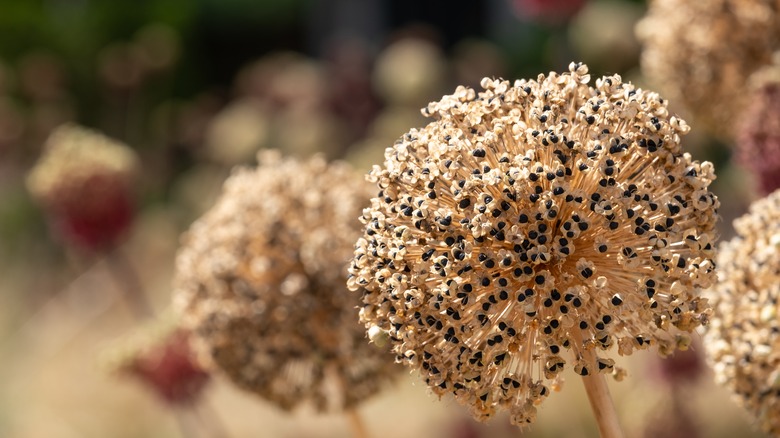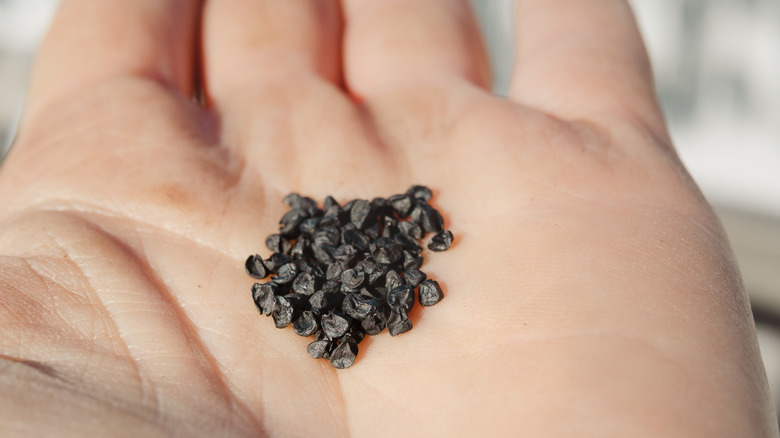Save Money On Expensive Alliums By Collecting Their Seeds. Here's How
Alliums can be a fun addition to the garden, with their bulbous heads that resemble a lollipop on a stick (except that they are much stinkier and not as tasty to eat!). This family of plants includes the common garlic and onions that we cook with as well as the ornamental onion varieties. It's also a flowering plant that can be beneficial to iris bulbs when grown alongside them. Many gardeners typically grow this plant from bulb and the expense varies, depending on the variety of allium. A bulb of Allium aflatunense, for example, can be sold for 60 cents, meanwhile a bulb of a larger variety called Allium giganteum can run closer to six dollars. The good news is you can save money on growing this ornamental onion by harvesting its seeds.
Collecting allium seeds requires attention to timing, particularly the season and when the flower heads begin to change color. Once the timing is right, choose your method of seed extraction by either plucking off the seeds individually or shaking the seeds off the flower heads to remove multiple at once. Storing your allium seeds properly is the final step to ensure that the seeds remain viable for your next growing season.
How to harvest allium seeds
Identifying the variety of allium you're harvesting seeds from is key. The seeds of each variety of allium should be harvested in different seasons. For example, Purple Sensation and Gladiator varieties can be harvested in late spring. Meanwhile, wild onion varieties will be ready in late summer or early fall.
Alliums contain a cluster of abundant, tiny flowers, so be prepared to harvest a plethora of seeds. A glance at the flower heads will tell you when the seeds are ripe for harvesting. Typically, this is when the heads brown. You'll also see the dark seeds dotted contrastingly across the dry flower head.
To acquire the seeds, the first method is to individually pluck off the seeds. Here, you'll squeeze the pods at their base and the seed should pop off. However, the faster way to get the job done is by placing the dried flower head in a paper bag and holding the neck of the bag shut. Then, shake the bag up and down. The blows from the upward and downward motions separate the seeds from the heads. For larger allium varieties, cut off the stalk before placing the head in the bag.
How to store your allium seeds
Once you have your all of your precious allium seeds harvested, you'll need to store them away until they're ready for planting. Properly storing allium seeds includes being mindful of temperatures and what you use to secure your seeds. Allium seeds should be stored in an area that is 41 degrees Fahrenheit. Storing your seeds in a cool area ensures that the temperature keeps the seed viable and intact. Keep your seeds dry and out of direct sunlight, too. Dry seeds have a longer shelf-life. Because of this, make sure whatever you place your seeds into effectively blocks out moisture.
Airtight, lidded containers like tightly sealed jars are ideal. In a pinch, however, a lidded coffee can or Tupperware container will suffice. You can also try keeping seeds in an old pill bottle, which makes storing seeds even easier. Once you have the container filled with seeds, place it in the fridge or a cool closet. Most seeds can be stored for approximately one year while retaining germination. There are also other clever ways to store seeds if you're not too concerned about moisture levels.


